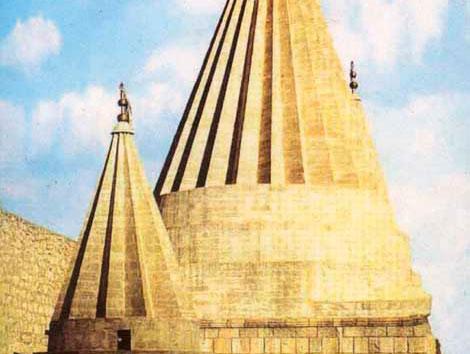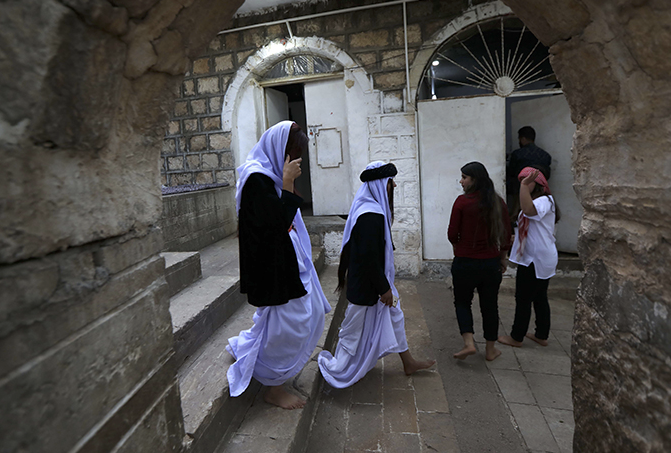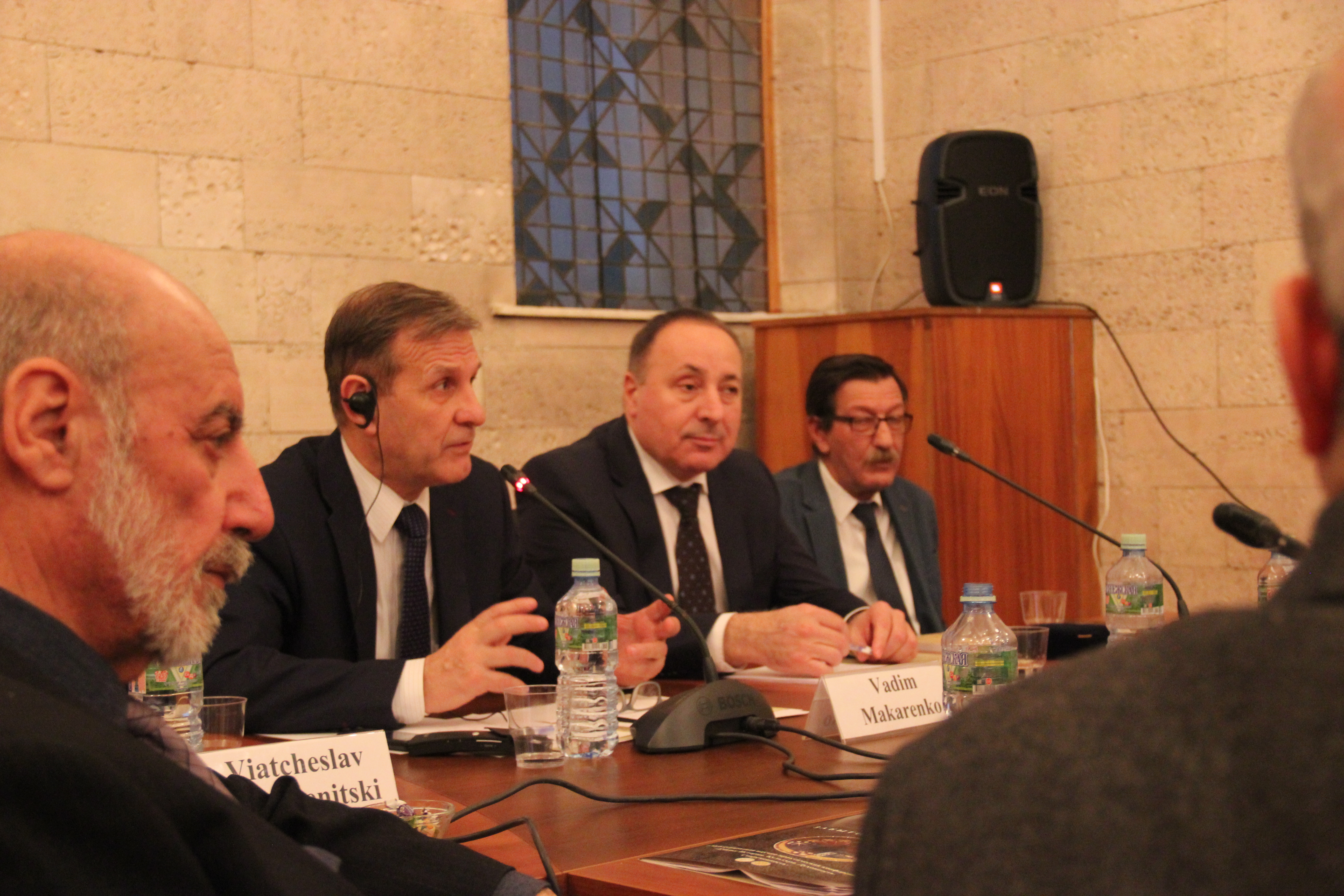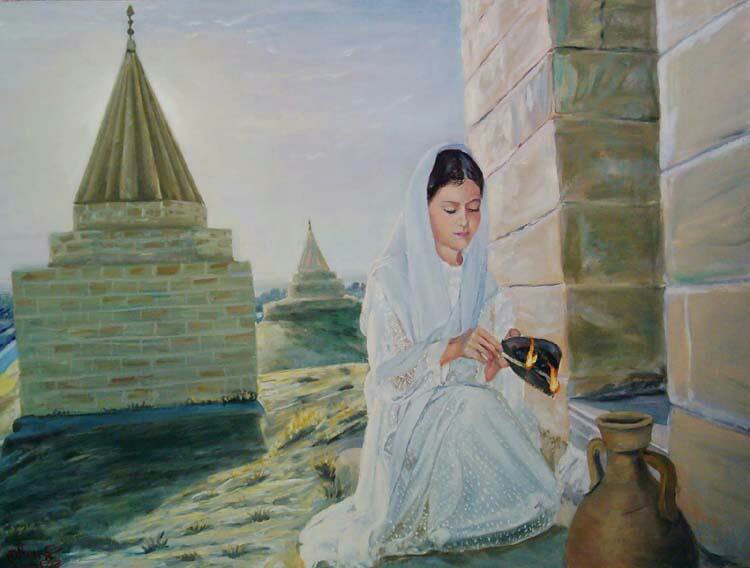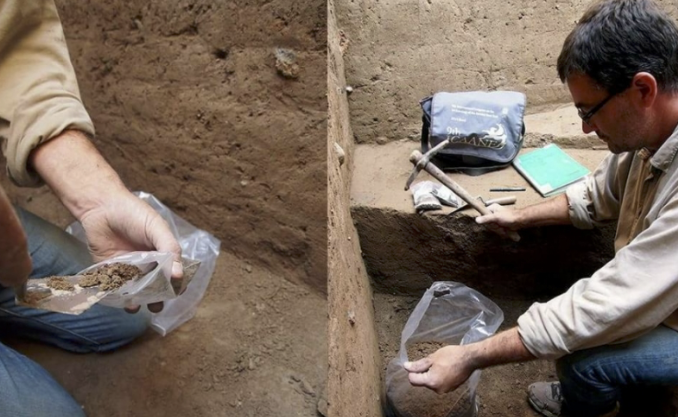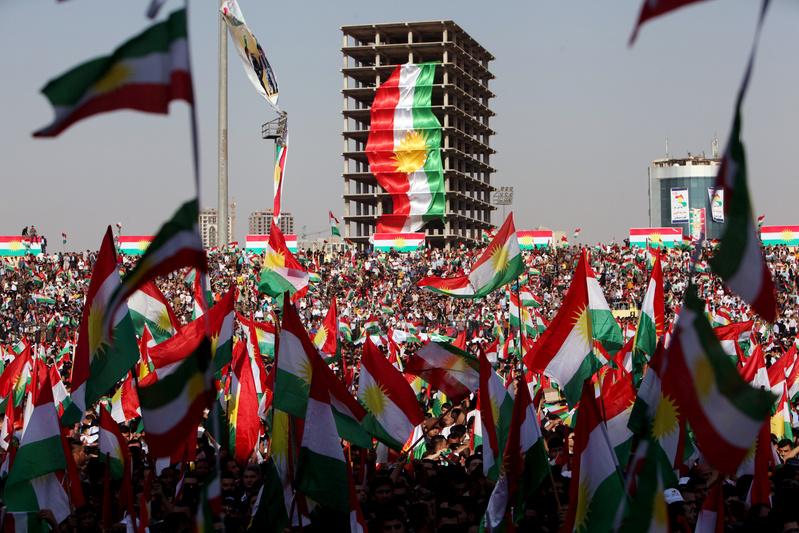Articles
Never again, again: The Yazidi Genocide
Sareta Ashraph / 14 августа 2017 года

On 15 August 2014, ISIS fighters ordered the Yazidis of Kocho to assemble in the village school. The women and younger children were forced upstairs while, on the ground floor, ISIS fighters divided the men and older boys in groups before leading them away. This moment, three years ago today, marked the first step in the destruction of the last intact Yazidi community in Sinjar, northern Iraq.
Other villages had been emptied days earlier following the 3 August 2014 ISIS attack on the Sinjar region. Many Yazidis fled into the Kurdish region of Iraq. Those closest to Mount Sinjar fled to its arid upper slopes, where they were besieged by ISIS. Without access to water and under a pounding sun, hundreds, mainly young children, died of dehydration. By 14 August, the YPG – the Syrian-Kurdish forces, operating under the cover of American and Iraqi airstrikes – opened a humanitarian corridor to rescue the survivors.
Thousands of Yazidis, including those from Kocho, were captured on the ground. In the days that followed, reports emerged of ISIS fighters killing Yazidi men, adolescent boys, and older women en masse; and of their forcing younger Yazidi women and girls into holding sites to be registered and sold. Later, news would circulate of young Yazidi boys being taken to ISIS “cub camps”, where they were indoctrinated and trained. It was quickly apparent that the Yazidi community was the target of the attack. ISIS publicly declared its intention to eradicate the Yazidis – a millienia-old religious group which ISIS reviles as pagans – from its “caliphate”.
The US Holocaust Memorial Museum, and then the Commission of Inquiry on Syriareleased reports determining that ISIS was committing genocide, as well as crimes against humanity and war crimes, in its multi-pronged attack on Yazidi women, children, and men. Both reports emphasised that ISIS’ genocide of the Yazidis relied on all five prohibited acts detailed in the 1948 Genocide Convention.
In doing so, the reports illuminated the continuum of genocidal violence, and underlined the central role that gender plays. As has historically been the case, the killings were disproportionately (but not solely) of men and older boys – the holders of perceived and actual power in public and private life. Many Yazidi women who were past childbearing age were also killed. Younger women and girls were forced into sexual slavery, and were often also beaten, starved, and forced to labour in fighters’ houses. This span of violence – often (and sometimes luridly) reduced in reports to sexual enslavement alone – was an assault on the victims themselves, as well as on the men (as the would-be protectors of the women). It was also intended to rend social fabric of the Yazidi community, through the perceived “dishonouring” of the women and girls, and as a consequence of pregnancies resulting from rape by ISIS fighters. Crimes committed against Yazidi children cleaved to gendered roles as conceived by ISIS fighters. Girls, at the age of nine, were enslaved, while boys were trained to fight.
Three years on, more than 2800 Yazidi women and children are still held captive by ISIS, suffering daily almost-unthinkable brutalities. Outside of the efforts of Yazidi community itself, there has been no strategy or attempt to rescue those still held. Families, most living in displaced peoples’ camps, are selling all they have (and borrowing all they can) to buy their relatives back from the very fighters who are abusing them, or to pay smugglers to retrieve them.
As territory in Sinjar has been reclaimed from ISIS, over 35 mass graves have been found, including five in Kocho. Political wrangling between the Kurdish regional government and Iraqi central government, and rising tensions among various armed groups in Sinjar, have prevented the preservation and collection of forensic evidence, the identification of remains, and the passage of Yazidi families who wish to return.
Most of the living victims of the genocide are female. Yazidi religious leaders have called for survivors to be embraced by the community. For the most part, this has protected the women and girls from ostracisation, and helped to maintain the cohesiveness of the community. Survivors are suffering severe trauma, with limited psychosocial support available to them. For many women, especially those with young and/or highly traumatised children, having regular engagement with counselling is difficult. There is a dire need for specialist counselling services for Yazidi children.
Many Yazidi women, particularly those from rural Sinjar, left school early to marry and start their families. Much of their communication with the world beyond their extended families was through their husbands or male relatives. With so many Yazidi men dead or missing, these women’s ability to survive and thrive is limited by their lack of personal and financial independence, an issue that must be addressed. And while Yazidi women – Nadia Murad Basee Taha, in particular – have become the face of the genocide, discussions around accountability, reconciliation, and the future of Sinjar have been dominated by male voices.
No one has yet been brought to justice for the crimes committed against the Yazidis. Neither Syria nor Iraq are parties to the Rome Statute, and it remains unlikely the Security Council will refer the situation in either country to the International Criminal Court due to the exercise of veto powers by its Permanent Members. Nevertheless, efforts are underway: the Global Justice Center, in a submission to the ICC’s Office of the Prosecutor, has requested the opening of a preliminary examination into genocide and other crimes committed against the Yazidis by ISIS fighters who are nationals of States Parties to the Statute. Meanwhile, national prosecutors continue to investigate and build cases, many of which are likely to be brought on the basis of universal jurisdiction. It is hoped that the International, Independent and Impartial Mechanism for Syria will support these prosecutions.
In the meantime, time ticks by. In the three years that have elapsed since ISIS’ initial attack, the suffering of the Yazidis has become well known. But security and justice remain, as yet, out of reach. And the genocide continues.
Источник: ilg2.org

